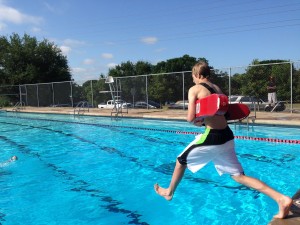Ready, Set, GO BACK TO SCHOOL!!!! Note taking skills: Part 6 of 6
Note taking is arguably one of the more frustrating aspects of classroom instruction. For many, it requires stamina, both in attentiveness and fine motor abilities. As students get older, note taking becomes both more prevalent and more independent. When post-secondary education comes into play, note-taking skills can truly make or break a lecture, class, or semester. With such an emphasis on this skill, it is a wonder that more secondary schools don’t offer classes on note taking. Whatever the case may be, each learner must adopt his or her own preference when it comes to taking notes in class.
- The first thing to consider is the different benefits of note taking. For instance, depending on the student and material, notes may be taken to help aid memory, comprehension, organization, or a combination of those skills.
- When taking notes in order to memorize information, it is important that students spend the time and energy writing only what they do not already know from memory. They can apply your prior knowledge later when studying, but during the class or lecture, they should limit their notes to new information. This not only saves time, but also allows students to focus in on the new or unfamiliar information.
- Abbreviations are another important aspect of note taking. Again, abbreviating notes can be very individualized. It is important that the note taker stick to a system or style of abbreviating, as to better ensure that the notes will make sense later on. Abbreviations can be done by shortening words, summarizing phrases, or even using symbols in place of text. But remember, an abbreviation is only helpful if it maintains the clarity of the notes.
- Keep notes organized. This is essential for studying and retaining the information later on. Students may prepare note sections ahead of time so that they can focus primarily on the lecture and less on the set-up of the page. For instance, if their teacher is introducing vocabulary prior to a history lesson, they can set up a section strictly for definitions and then add content notes on a separate page.
- Put a date on the notes. This way, if there is any confusion when looking back at the notes, students can speak with their teacher or peer about the specific lesson or lecture. Dates also help when taking notes because they allow students to see the progression of the concept, information, or task in a sequential manner.
- Rewrite notes when necessary. There are a few benefits to this technique. Rewriting not only gives students an opportunity to clean up or organize the material a little better, but it also aids in memorization. Rewriting something, especially if students paraphrase or explain the notes in their own words, allows them to test their knowledge of the material. Simply writing something down doesn’t guarantee comprehension—rephrasing notes allows note takers to break down and articulate the information as they make sense of it.
- Highlighting is also recommended when rewriting or editing notes. Research indicates a link between color and memory; it also helps to focus students’ attention on the more vital information when studying.
Join us for “Homework. Got an Easy Button?”, a free, highly interactive 60-minute session designed to provide parents with concrete ideas and practical tools to support their student’s study practice at home. For more information, click here: https://learningessentialsedu.com/workshops/
Looking to empower your child to succeed? Learning Essentials’ Brain Camp teaches students practical step-by-step ways to study, organize, manage time, prepare for tests, and use executive functioning strategies— essential skills for today’s academic environment. Click here to learn more or enroll: https://learningessentialsedu.com/workshops/













